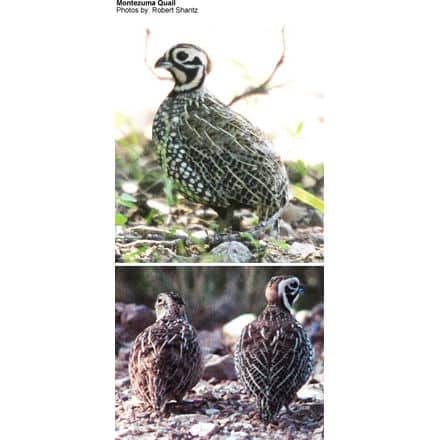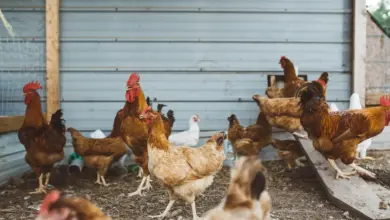Swinhoe’s Pheasant (Lophura swinhoii)
The Swinhoe’s Pheasants, Lophura swinhoii, is also regionally known as the Formosan Pheasant, Mountain Chicken, Red-footed Mountain Chicken, or Blue Pheasant.
This pheasant was named after the British ornithologist Robert Swinhoe, who first discovered this species in 1862.
Distribution / Habitat:
This pheasant can be found in the mountains of central Taiwan, where it inhabits undisturbed primary broadleaved forest and mature secondary forest at ~1,000 ft – 7,000 ft (~300 – 2,000 m).
The Swinhoe’s Pheasant can be seen along forest trails. There are often visible paths through the vegetation where the pheasants walk in and out every day. Where food sources are plentiful, Swinhoe’s Pheasants often occur in groups. The pheasants are most active in the early dawn and late afternoon. During the night, they roost in trees.
Outside the breeding season, Swinhoe’s Pheasants are most frequently seen alone. From April to September, the pheasants may appear in pairs or you may see a hen with chicks or a group of immature birds.
The Swinhoe’s Pheasant is considered globally near-threatened due to habitat loss and capture for trade. Fragmentation of forests occurring in the upper elevations represents a growing threat to populations of the Swinhoe’s Pheasant. At one time, the wild population came close to extinction with less than 200 birds remaining. Thanks to the establishment of nature reserves and national parks, and the reintroduction of captive-bred birds, wild numbers are now stable in the protected areas but may be declining elsewhere due to hunting and habitat loss. These pheasants are now protected from international trade by CITES. Another problem that these isolated populations of these pheasants are currently facing is inbreeding which causes a concern for the genetic health of the species.
Breeding / Nesting:
Swinhoe’s Pheasants breed in the spring. Males display by bobbing their heads, jumping, and fluttering their wings, keeping their white crests and red wattles raised. The nests are built in well-hidden locations on a tree, where it is well hidden by vegetation, or under a large shelter where it is protected from rain and predators.
Usually, an alarmed pheasant will escape either by running away or flying, often downhill. When a hen with chicks is alarmed, she calls a warning cry and the chicks hide in nearby vegetation. The hen leads the predator away, then returns and gathers the young together.
The hen lays 4-8 eggs per clutch, which she incubates alone. The chicks hatch after about 25 days. They are covered with soft down and will get their adult plumage during their second year.
Description:
Male:
The Swinhoe’s pheasants males are large, brightly colored birds, boasting a glossy dark blue to black plumage with highlights of brilliant metallic blue, green, and maroon; and a bold and distinctive pattern of white patches on the upper back, crest, and long central tail feathers.
The shoulders are a dark, shimmering maroon, and they have conspicuous crimson-red legs and face wattles.
The male averages 28 inches (70 cm) in body length. The Swinhoe Pheasants are slightly larger than the equally rare Mikado Pheasant and the similar Edwards Pheasant and also differ in having a short white crest, a blue head, neck, and breast – and the red face wattles are much more developed. The long central tail feather is white.
First-year males look similar to adult males but are duller and the white patch on the back is mottled brown.
Female:
Females are smaller and much plainer. They are mostly greyish-brown, speckled with triangular yellow-buff markings, for camouflage when incubating. The middle tail feathers are body color with brown barring and the outer tail feathers on both sides are reddish brown
At ~ 20 inches (50 cm) in average length, females are smaller than males. They have smaller wattles than the males and a much shorter tail.
Immature Birds:
Immature Swinhoe’s Pheasants are mottled brown for camouflage. They have several dark brown vertical lines on their head and eye lines. They have a slightly duller coloring than females and will take 2 years to gain full adult plumage
Diet / Food:
These pheasants feed by digging and their natural diet consists of seeds, plant material, acorns, berries, flower buds, leaves, and occasionally insects such as earthworms, millipedes, and termites.
They tend to feed in the early morning and late afternoon hours, along trail edges in herbaceous ground cover.
Keeping and Breeding the Swinhoe’s Pheasant
These visually appealing pheasants are generally calm, easily tamed, and very hardy. For these reasons, their popularity has grown in recent years, and they are now well-established and common in aviculture.
As they are fairly uncomplicated pheasants to keep, Swinhoe’s make a great choice for the beginning pheasant fancier.
Delacour mentions a cinnamon-colored bird that was hatched years ago in France, but nothing more has been written on the matter and this mutation has likely bred out.
Swinhoe males can at times become aggressive towards their keeper or other birds. The males love to display and look quite impressive when they are strutting around or beating their wings.
Male gives wing-whirring display during the breeding season, which varies depending on local climate conditions, but usually commences in March and goes on until July.
The females are avid dusters and like to make well-formed deep nests near the foot of a tree or under a rock. They usually start to breed in their second year, but first-year birds are often fertile.
Clutches consist of 3 to 12 medium-sized glossy pinkish eggs, which the hen incubates for 24-28 days. Two or three days after hatching, the chicks can venture out of their nest on their own.
The chicks have a furry appearance and begin to develop feathers in 3 weeks.
The young birds have a plumage very similar to the hens; only by the time winter arrives do the males start to develop the plumage of the adult.
Incubation and Chick Raising:
Breeders often pull one or two clutches for hand-rearing and allow the hen to raise the last clutch of the season. This way fanciers will increase the number of chicks produced each season.
Eggs should be pulled shortly after they are laid (most certainly within 24 hours). Great incubators to use are the Octagon 20 or 40 (depending on how many eggs you have at one time). Other incubator options are on this webpage.
The temperature should be set to 99.8°F, humidity-wet bulb 82 with humidity adjusted periodically depending on the development of the air space shown by candling.
On the final day of incubation, each egg is placed in its oval wire mesh hatching basket (6″ x 3″ x 3″) and set in a hatcher. Incubation for Swinhoe is about 25 days. After the chicks hatch, they stay in the hatcher for a minimum of 8 hours.
Hand raising Chicks:
The chicks are easy to raise together with their kind. They have golden cream faces, throats, and abdomen with an auburn crown and dark eye streaks. They have a dark brown back and wings. The wings have a golden cream bar on them.
Initially, you can place a clutch in a brooder pen of about 18″ dimensions. After a few days, you can separate them and place them into 2′ x 4′ baby pens for about a week; then for the next 7 to 9 weeks, they should be placed in a larger pen of 2′ x 6′ dimensions.
All brooding pens should have a heat lamp at one end and food and water at the other end. The heat lamp should be attached to a dimmer switch so that you can turn down the amount of heat as the chicks get older until you can turn the heat off altogether.
It is easier to maintain sanitation in the brooders if the pens have wire bottoms.
Once they are off the heat for a few weeks, you can move the chicks out to a grassy pen with a heated shelter. Make sure to lock the chicks into the heated shelter for the night. After they are toughened up, they are moved to an outside chick pen.
Housing:
These pheasants can be housed in pairs or trios. They require a roomy aviary with lots of cover, but minimal shelter is needed as they are very hardy and can withstand both extremes of temperature. A planted aviary of say 150 sq. ft. is adequate, and a sheltered pen needs to be provided.
Diet:
In captivity, they may be provided with game bird pellets (small chicks: 25% turkey starter crumble; growing chicks 20% crumble, and adults 16% layer pellets. Additionally, they should be provided a handful of mixed grains every second day except during breeding season, as well as fresh greens, such as dandelions, lettuce, chickweed and grass, and fruits that may be in season (berries and grapes, etc.).
Other Related Web Links: Pheasant General Information … Pheasant Species … Pheasant Taxonomy … Breeding Pheasants … Pheasant Photo Gallery … Housing Pheasants … Pheasant Diseases




